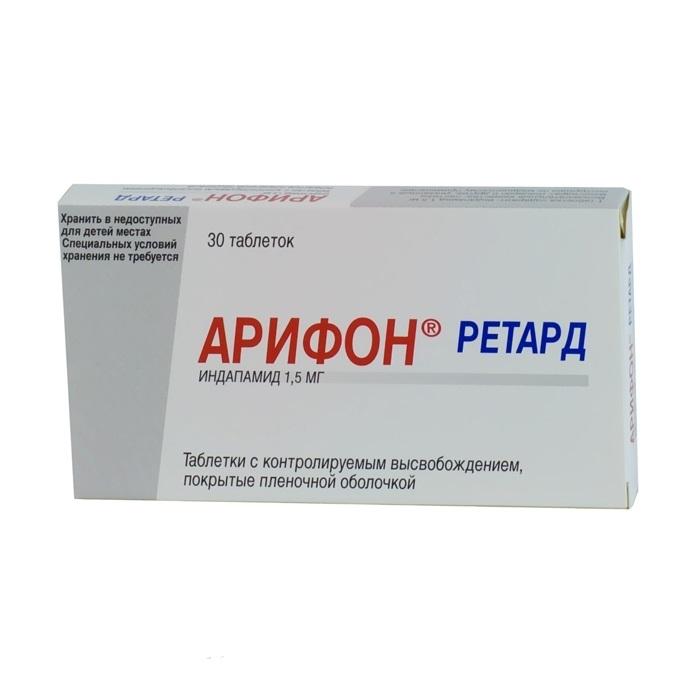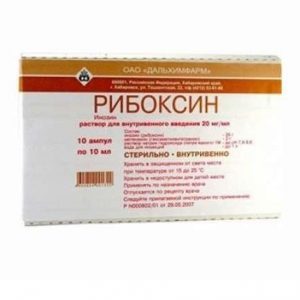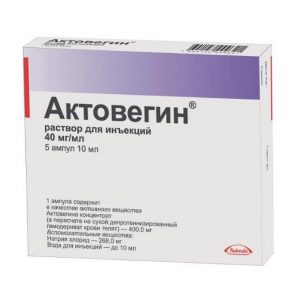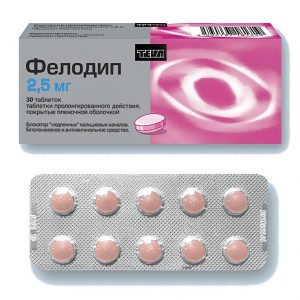Description
Packing
30 pcs
Pharmacological action
Arifon-retard – antihypertensive, diuretic.
Pharmacodynamics
Indapamide is a sulfonamide derivative with an indole ring and is similar in pharmacological properties to thiazide diuretics that inhibit the reabsorption of sodium ions in the cortical segment of the nephron loop. This increases the excretion of sodium ions by the kidneys, chlorine and, to a lesser extent, potassium and magnesium ions, which is accompanied by an increase in diuresis and hypotensive effect.
In clinical trials of phases II and III when using indapamide in monotherapy in doses that do not have a pronounced diuretic effect, a 24-hour hypotensive effect was demonstrated.
The antihypertensive activity of indapamide is associated with an improvement in the elastic properties of large arteries, and a decrease in arteriolar and total peripheral vascular resistance.
Indapamide reduces left ventricular hypertrophy.
Thiazide and thiazide-like diuretics at a certain dose reach a plateau of therapeutic effect, while the frequency of side effects continues to increase with a further increase in the dose of the drug. Therefore, you should not increase the dose of the drug, if when taking the recommended dose, the therapeutic effect is not achieved.
In short, medium-long and long-term studies involving patients with arterial hypertension, indapamide has been shown to: not affect lipid metabolism, including
does not affect carbohydrate metabolism, including triglycerides, cholesterol, LDL and HDL. in patients with diabetes.
Pharmacokinetics
In Arifon ® retard tablets, the active substance is in a special carrier matrix that provides a gradual controlled release of indapamide in the gastrointestinal tract.
Absorption
The released indapamide is rapidly and completely absorbed into the digestive tract.
Eating slightly increases the absorption time of the drug, without affecting the completeness of absorption.
Cmax in blood plasma is reached 12 hours after ingestion of a single dose. With repeated doses, fluctuations in the concentration of the drug in the blood plasma in the interval between doses of the drug are smoothed out.
There is an individual variability in the absorption of the drug.
Distribution of
About 79% of the drug binds to plasma proteins. T1 / 2 – 14-24 hours (average 18 hours).
Css is achieved after 7 days of taking the drug.
With repeated administration of the drug, its cumulation is not observed.
Metabolism
Indapamide is excreted as inactive metabolites, mainly by the kidneys (70% of the administered dose) and through the intestines (22%).
Patients at high risk
In patients with renal failure, the pharmacokinetics of Arifon ® retard does not change.
Indications
Arterial hypertension.
Contraindications
severe renal failure (CC less than 30 ml / min)
hepatic encephalopathy
severe hepatic impairment
hypokalemia
hypersensitivity to indapamide, other derivatives of sulfonamide auxiliary substances or to any.
Due to the fact that the preparation contains lactose, Arifon ® retard is not recommended for patients with lactose intolerance, galactosemia, glucose-galactose malabsorption.
Caution: the drug should be prescribed for impaired liver and kidney function, impaired water-electrolyte balance, debilitated patients or patients receiving combination therapy with other antiarrhythmic drugs, for diabetes mellitus, elevated uric acid levels, hyperparathyroidism, patients with an extended QT interval.
Due to lack of enough wedgesThe drug is not recommended for use in children under 18 years of age.
Use during pregnancy and lactation
Generally, diuretic drugs should not be prescribed during pregnancy. You can not use these drugs to treat physiological edema during pregnancy. Diuretic drugs can cause fetoplacental ischemia and lead to impaired fetal development.
Due to the fact that indapamide is excreted in breast milk, it is not recommended to prescribe the drug during breastfeeding.
Composition
1 tablet contains:
Active ingredient: indapamide1.5 mg
Excipients: lactose monohydrate – 124.5 mg hypromellose – 64 mg magnesium stearate – 1 mg povidone – 8.6 mg silicon dioxide anhydrous – 0.4 mg
Film sheath: glycerol – 0.219 mg hypromellose – 3.642 mg macrogol 6000 – 0.219 mg magnesium stearate – 0.219 mg titanium dioxide – 0.701 mg.
Dosage and administration
Inside, swallowing whole, without chewing, drinking with water, 1 tablet per day, preferably in the morning.
In the treatment of patients with arterial hypertension, increasing the dose of the drug does not increase the antihypertensive effect, but enhances the diuretic effect.
Elderly patients
In elderly patients, plasma creatinine levels should be monitored for age, body weight and gender.
Arifon ® retard in a dose of 1, 5 mg / day (1 tablet) can be prescribed for elderly patients with normal or slightly impaired renal function
Side effects of
From the circulatory and lymphatic systems: very rarely – thrombocytopenia, leukopenia, agranulocytosis, aplastic anemia, hemolytic anemia.
From the side of the central nervous system: rarely – asthenia, headache, paresthesia, vertigo of unspecified frequency – fainting.
From the CCC side: very rarely – arrhythmia, marked decrease in blood pressure of unspecified frequency – pirouette type arrhythmia (possibly fatal) (see sections “Interaction” and “Special Instructions”).
From the digestive system: infrequently – vomiting is rare – nausea, constipation, dryness of the oral mucosa is very rare – pancreatitis.
From the urinary system: very rarely – renal failure.
From the side of the liver and biliary tract: very rarely – impaired liver function of unspecified frequency – the possibility of hepatic encephalopathy in case of liver failure (see “Contraindications”, “Special Instructions”), hepatitis.
From the skin and subcutaneous fat: hypersensitivity reactions, mainly dermatological, in patients predisposed to allergic and asthmatic reactions: often – a maculopapular rash is infrequent – hemorrhagic vasculitis is very rare – angioedema and / or urticaria, toxic epidermal necrolysis, Stevens-Johnson syndrome of unspecified frequency – in patients with acute form of systemic lupus erythematosus, deterioration is possible diseases. Cases of photosensitivity reactions are described (see sections “Special Instructions” and “Interaction”).
Laboratory indicators: unspecified frequency – increase in the QT interval on the ECG (see “Special Instructions”) increase in the concentration of uric acid and glucose in the blood: thiazide and thiazide-like diuretics should be used with caution in patients with gout and diabetes mellitus increased liver transaminases.
Drug Interaction
An unwanted combination of medicines
Lithium preparations. With the simultaneous use of indapamide and lithium preparations, an increase in the concentration of lithium in the blood plasma may be observed due to a decrease in its excretion, accompanied by the appearance of signs of overdose. If necessary, diuretic drugs can be used in combination with lithium preparations, while carefully selecting the dose of drugs, constantly monitoring the lithium content in blood plasma.
Combination of drugs requiring special attention
Drugs capable of causing pirouette arrhythmia:
– antiarrhythmic drugs of class IA (quinidine, hydroquinidine, disopyramide)
– antiarrhythmic drugs of class III, amioron : phenothiazines (chlorpromazine, ciamezazine, levomepromazine, thioridazine, trifluoroperazine), benzamides (amisulpride, sulpiride, sultopride, tiapride), butyrophenones (droperidol, haloperidol)
– other: bepridil, cypridil lofantryn, myzolastyn, pentamidine, sparfloxacin, moxifloxacin, astemizole, Vincamine (w / w).
Increased risk of ventricular arrhythmias, especially arrhythmias of the pirouette type (risk factor is hypokalemia).
Blood plasma levels of potassium should be determined and, if necessary, to correct it before the start of combination therapy with indapamide and the above drugs. It is necessary to control the clinical condition of the patient, to control the level of electrolytes of blood plasma, ECG parameters.
Patients with hypokalemia should use drugs that do not cause arrhythmia such as “pirouette”.
NSAIDs (for systemic use), including selective COX-2 inhibitors, high doses of salicylates ( 3 g / day). The antihypertensive effect of indapamide may be reduced. With a significant loss of fluid, acute renal failure may develop (due to a decrease in glomerular filtration). Patients should compensate for fluid loss and carefully monitor renal function at the beginning of treatment.
ACE inhibitors. The administration of ACE inhibitors to patients with low concentrations of sodium ions in the blood (especially patients with renal artery stenosis) is accompanied by the risk of sudden arterial hypotension and / or acute renal failure.
Patients with arterial hypertension and possibly reduced blood plasma diuretics due to diuretics should:
discontinue diuretics 3 days before treatment with ACE inhibitor. In the future, if necessary, diuretics can be resumed
– or begin therapy with a low dose ACE inhibitor, followed by a gradual increase in dose if necessary.
In chronic heart failure, treatment with ACE inhibitors should be started at low doses with possible pre-dose reduction of diuretics.
In all cases, renal function (creatinine content in blood plasma) should be monitored in patients within the first week of ACE inhibitor administration.
Other drugs that can cause hypokalemia: amphotericin B (I / O), ACS and mineralocorticosteroids (for systemic use), tetracosactide, laxatives that stimulate bowel motility. Increased risk of hypokalemia (additive effect).
Continuous monitoring of potassium in blood plasma is required, and correction is required if necessary. Particular attention should be paid to patients receiving concomitant cardiac glycosides. It is recommended to use laxatives that do not stimulate bowel motility.
Baclofen. There is an increase in the antihypertensive effect.
Patients need to compensate for fluid loss and carefully monitor renal function at the beginning of treatment.
Cardiac glycosides. Hypokalemia enhances the toxic effect of cardiac glycosides.
When potassium and cardiac glycosides are used concomitantly, blood plasma potassium levels, ECG parameters should be monitored, and therapy adjusted if necessary.
A combination of drugs that require attention
Potassium-sparing diuretics (amiloride, spironolactone, triamterene). Combination therapy with indapamide and potassium-sparing diuretics is appropriate in some patients, but the possibility of developing hypokalemia (especially in patients with diabetes mellitus and patients with renal failure) or hyperkalemia is not excluded.
It is necessary to control the level of potassium in the blood plasma, ECG parameters and, if necessary, adjust therapy.
Metformin. Functional renal failure, which may occur on the background of diuretics, especially loopholes, with the simultaneous administration of metformin increases the risk of lactic acidosis.
Metformin should not be used if creatinine levels exceed 15 mg / l (135 μmol / l) in men and 12 mg / l (110 μmol / l) in women.
Iodine-containing contrast media. Dehydration of the body against the background of taking diuretic drugs increases the risk of acute renal failure, especially when using high doses of iodine-containing contrast agents.
Patients need to compensate for fluid loss before using iodine-containing contrast media.
Tricyclic antidepressants, antipsychotics (neuroleptics). The drugs of these classes increase the antihypertensive effect of indapamide and increase the risk of orthostatic hypotension (additive effect).
Calcium salts. With the simultaneous appointment may develop hypercalcemia due to the reduction of excretion of calcium ions by the kidneys.
Cyclosporine, tacrolimus. It is possible to increase the content of creatinine in the blood plasma without changing the concentration of circulating cyclosporine, even with normal content of fluid and sodium ions.
Corticosteroid drugs, tetracosactide (for systemic use). Reduction of hypotensive action (retention of fluid and sodium ions as a result of action of corticosteroids).
Overdose
Indapamide, even at very high concentrations (up to 40 mg, ie 27 times the therapeutic dose), has no toxic effect.
Symptoms of acute drug poisoning are primarily associated with impaired water-electrolyte balance (hyponatremia, hypokalemia). Nausea, vomiting, decrease in blood pressure, convulsions, dizziness, drowsiness, confusion, polyuria or oliguria leading to anuria (due to hypovolemia) may also be noted.
Treatment: Immediate measures to remove the drug from the body: gastric lavage and / or the appointment of activated carbon followed by the restoration of normal water-electrolyte balance.
Storage conditions
At a temperature not exceeding 30 ° C.
Expiration
2 Year
pharmacy terms and conditions for prescription
Dosage form
Dosage form
tablets prolong.
Servye, France




